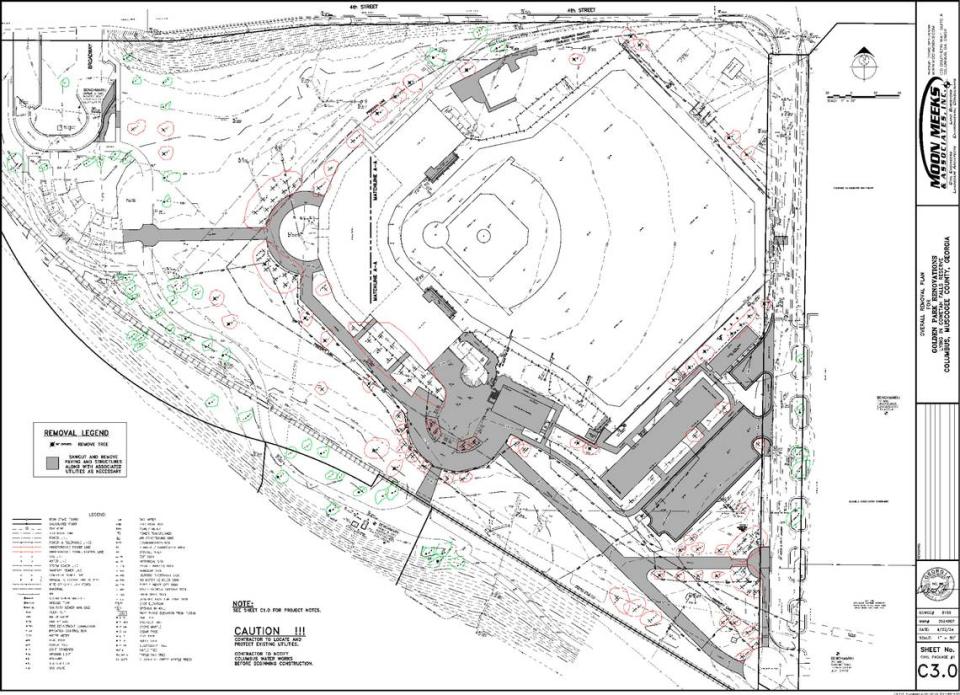Dozens of trees felled at Golden Park for Columbus’ baseball renovation. What’s next?
The anticipated mass removal of established oaks and pine trees outside Golden Park became a reality this week when bulldozers and chainsaws fulfilled their duties.
Bulldozers pushed down 21 oak trees, 15 pine trees, clusters of crepe myrtles, and clusters of magnolias on Monday and Tuesday by the general contractor Brassfield and Gorrie.
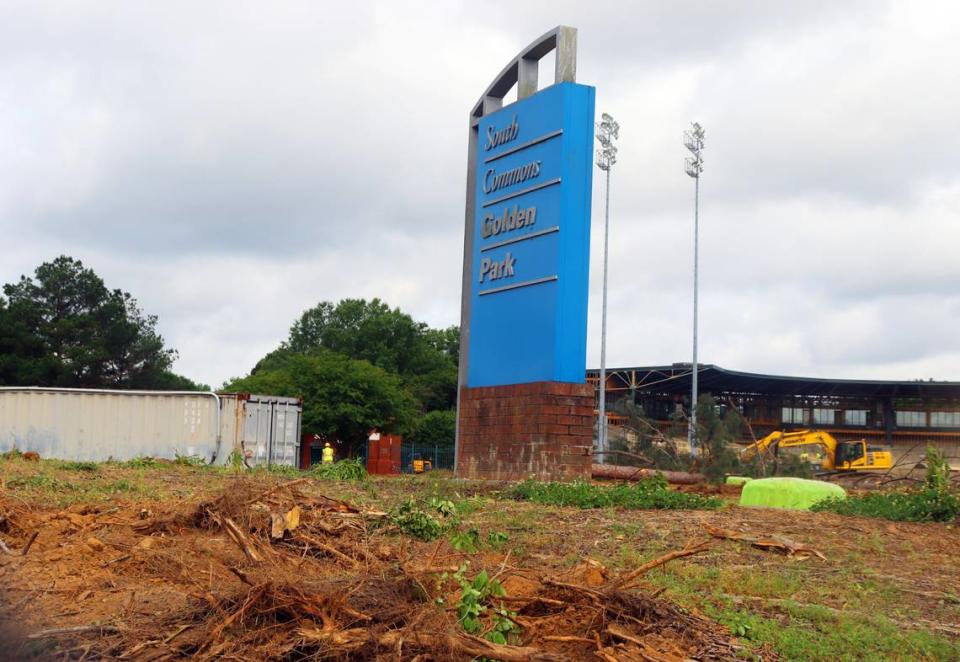
The once green, verdant grounds, teeming with life beeps were replaced by yellow tractors and and uprooted trees and layers of dust at the South Commons Golden Park grounds.
“Progress is a good thing and yet it brings sadness, sadness in many ways,” Jon Hanshus, a Phenix City resident riding his bike near the project told the Ledger-Enquirer. “It’s a tremendous, historic place. If we’re going to go for mega millions, the quality of this new place has even more repercussions.”
The 98-year-old stadium and its surrounding landscape renovation are part of the efforts to attract an entirely new generation of players and baseball enthusiasts for a minor league team.
The Ledger-Enquirer reached out to the project architect, Populous, to better understand the necessity of design that required removing trees and the rigor of sustainable design that the stadium may have. The firm, which has completed hundreds of stadiums around the world–some receiving high environmental standard certifications like LEED–did not respond immediately in time for publication.
Four pine trees with diameters ranging from 22 to 28 inches, nearly as tall as the stadium lights were removed within 10 minutes. These baseball stadium lights are around 50 feet high.
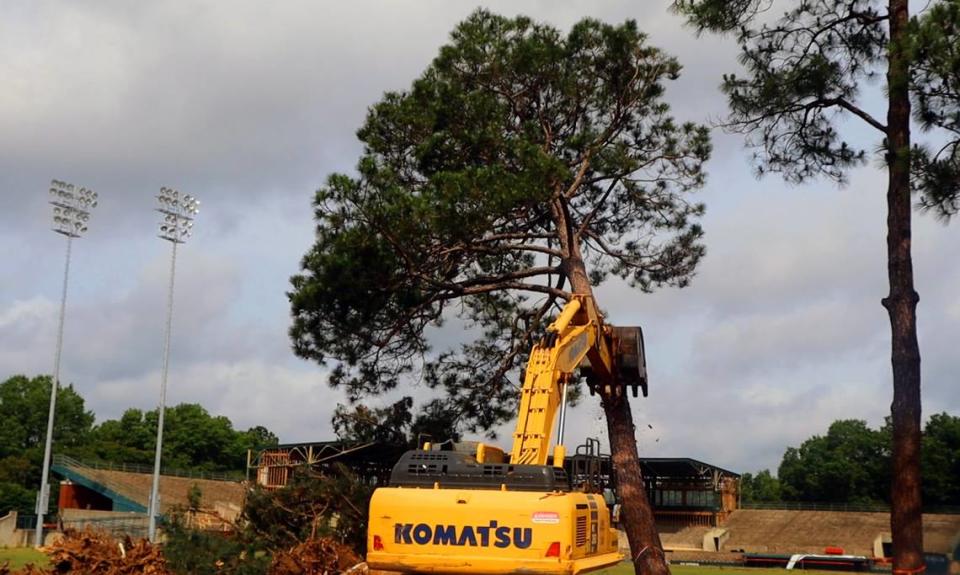
The pines will be replaced with a new clubhouse, the oaks with new batting cages, and the crepe myrtles with a new walk path, all features of the stadium’s $50 million dollar face lift.
Not just sad–a loss of free services
The trees will be replaced by 73 new sugar maples, tulip poplar, and Princeton elm, according to the tree plan. But, the loss of services that the trees provided is what has Clifton Reuhl concerned.
Reuhl is a Columbus State University biology professor and executive committee member of Trees Columbus, the tree protection nonprofit. He said the water runoff avoided, and capturing heat that radiated off the building are two of the key services that are gone.
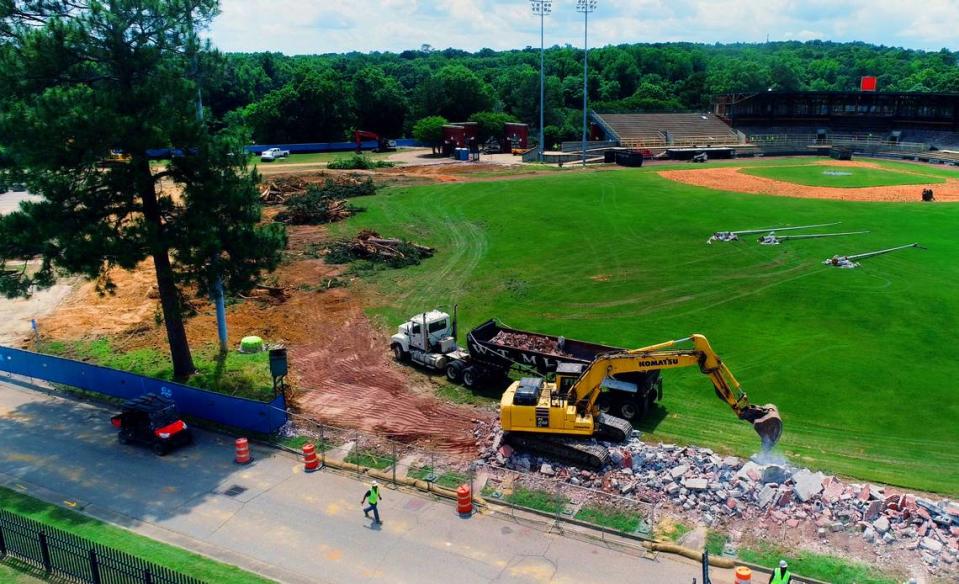
“It will take 20 to 30 years to have the growth to start seeing canopy benefits as long as they are properly cared for,” Reuhl said.
More extreme heat days that get up to triple digits are already more frequent from climate change and will continue, according to the latest science from the Fifth National Climate Assessment.
Using the i-Tree tool, Ruehl and the Ledger-Enquirer input the data provided by the City to create estimates of the tree benefits.
Every year the trees intercepted roughly 109,271 gallons of water.
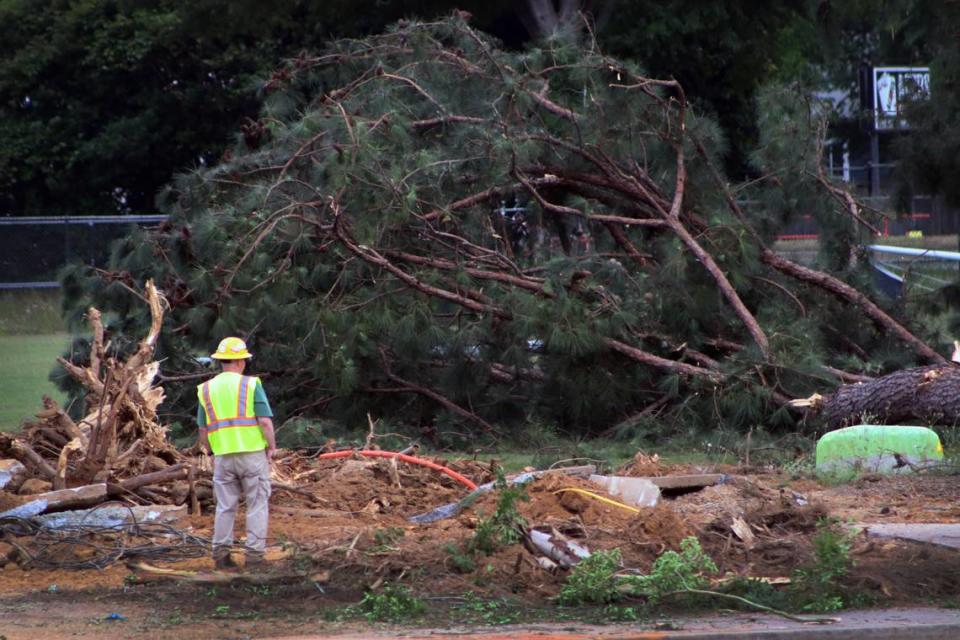
“This is all water runoff that was avoided, and it’s an impressive figure even in a semi-tropical area that we live in,” Reuhl said.
Trees don’t just sequester carbon, they store it in their cells.
“The carbon is stored in the wood and in the trees itself,” he said. “If the trees were left [according to i-Tree calculations] over the next 20 years they could sequester 101 lbs of carbon that would otherwise go into the atmosphere.”
What happens to the carbon in the trees now that they are cut?
Ruehl said the only way that carbon gets released back into the atmosphere is if the wood is burned.
“If they end up in landfill and decompose [the carbon] is not lost. If it was ground and left for mulch, it would close the loop and keep the nutrients and carbon onsite.”
In an email, Ryan Pruett, director of inspections and codes at project manager for the project wrote to the Ledger-Enquirer stating the trees will be used as mulch for erosion control purposes on the project site.
Reuhl was enthusiastic about Tulip popular being planted, but wished there was even more tree diversity.
“That is a good choice, they grow quickly here,” he said.
They, along with the Princeton elm will be planted at just 6 inches, and not start to have a canopy or benefits for another 15 to 20 years.
“It’s good they are keeping some oak and pine and it’s not just a monoculture but I think they could have done more than just three species of new trees.”
According to Reuhl and his colleague Julie Ballenger, a biology professor at CSU, all three species chosen to replace the old are native to Georgia.
